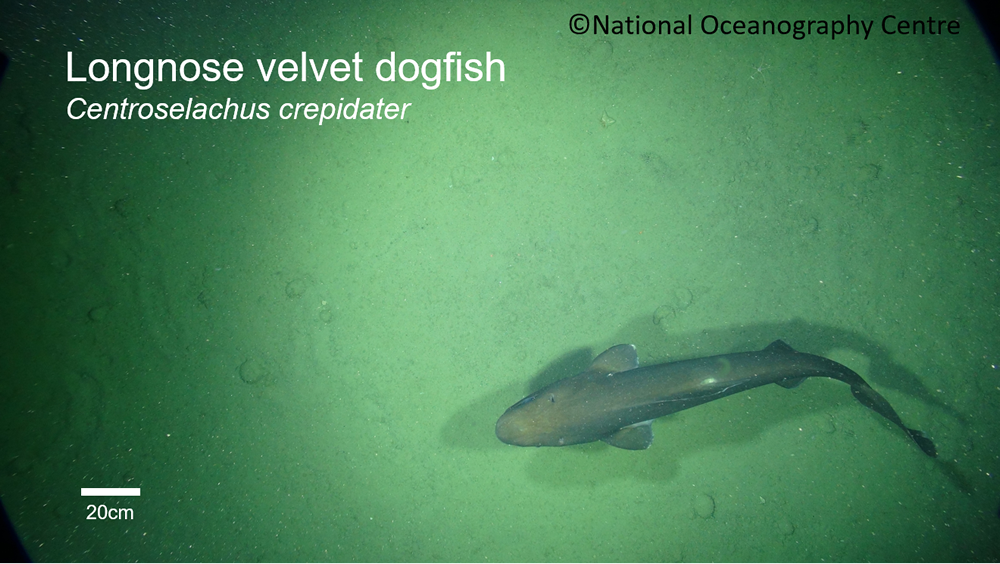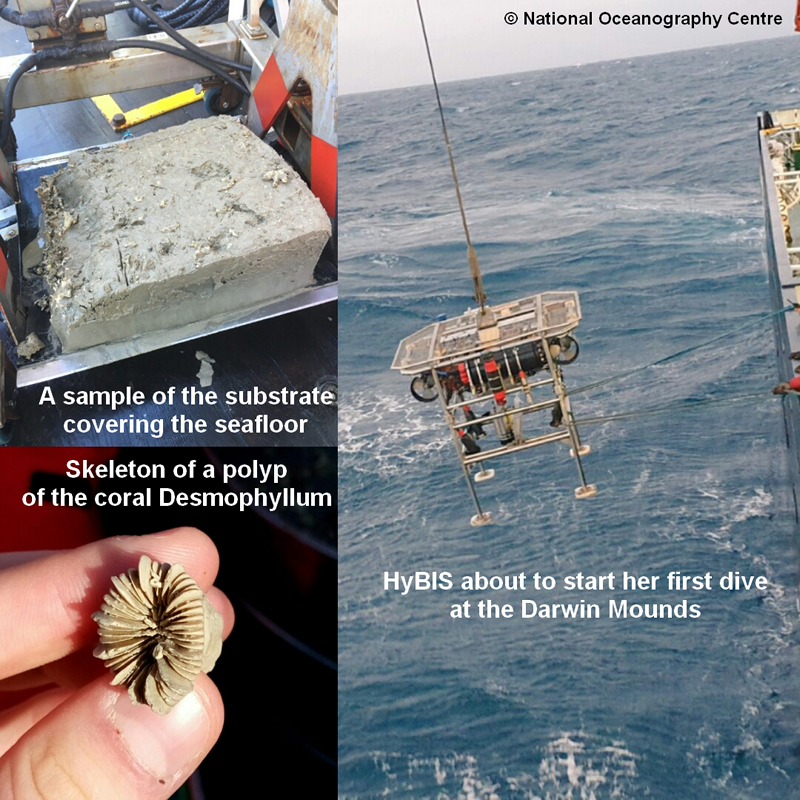On the morning of 11 September the Royal Research Ship Discovery arrived at the western Darwin Mounds. The weather allowed us to collect data using a variety of techniques.

The seabed substrate from ±1,000m depth was sampled using a box core in order to characterise the fauna (under 1mm) living in the sediment, also called the macrobenthos. Dead coral fragments of Madrepora oculata and Lophelia pertusa were also recovered.
After these first samples, the ship navigated to the eastern part of the Darwin Mounds. This area is of interest as it was once heavily damaged by bottom trawling before fishing activities were forbidden in the area. To capture fish living near the seabed, fishermen dragged bottom-trawling nets which have heavy weights attached that rip through and destroy the slow-growing, sometimes centuries-old coral.

At 7pm, the HyBIS robotic underwater vehicle was launched to follow the same video tracks as surveyed in 2011. This will allow us to compare how the area has changed over time. Only a few colonies of living hard corals remain on the seabed, on top of the mounds. Besides the mounds, swarms of curious squids and a more than one metre-long deep-sea shark (see picture below) welcomed us for our first dive of the expedition. After a dive of 7 hours at 1,050m depth, HyBIS was successfully recovered.
Even if the waves currently reach up to 3 metres in height, the weather remains sunny and mild. However, the weather forecast does not look very good for the rest of the week, predicting waves to become double that height! We may have to leave the area for a short while to let this storm pass through, but we will be back! Stay tuned for more news of this expedition.